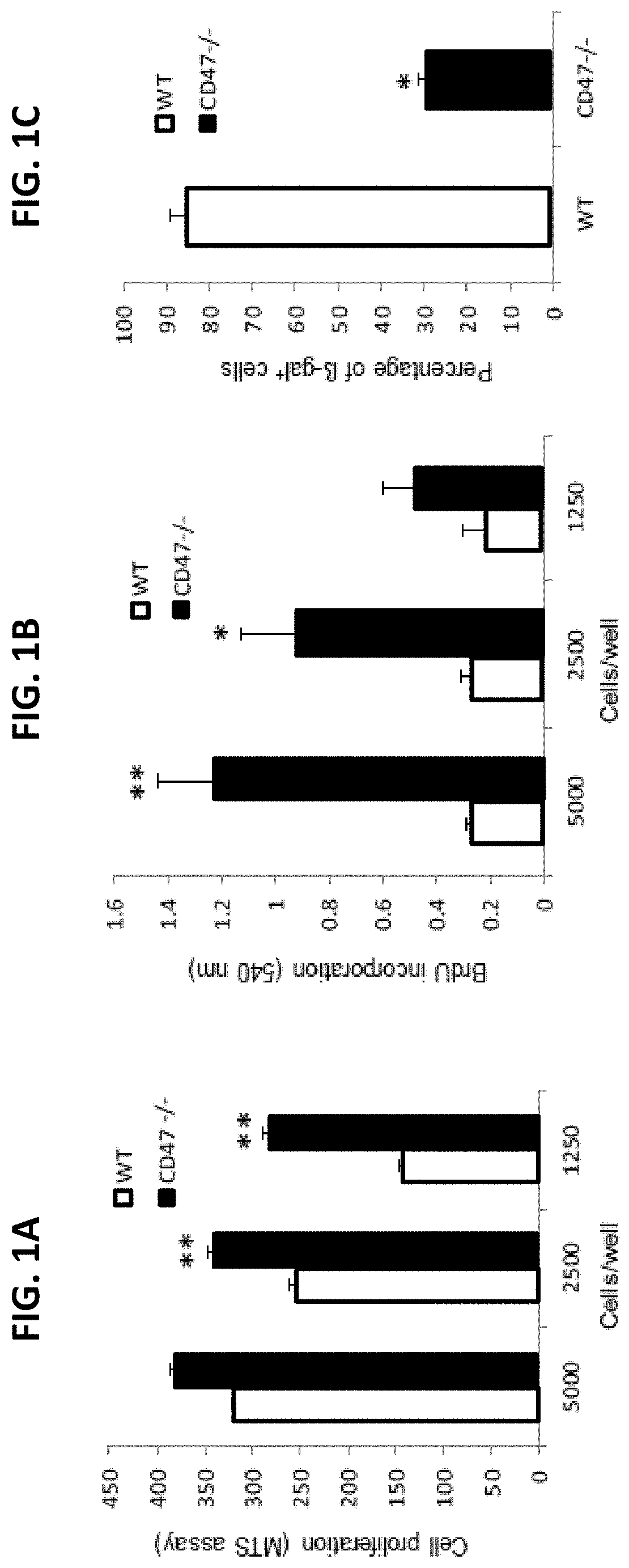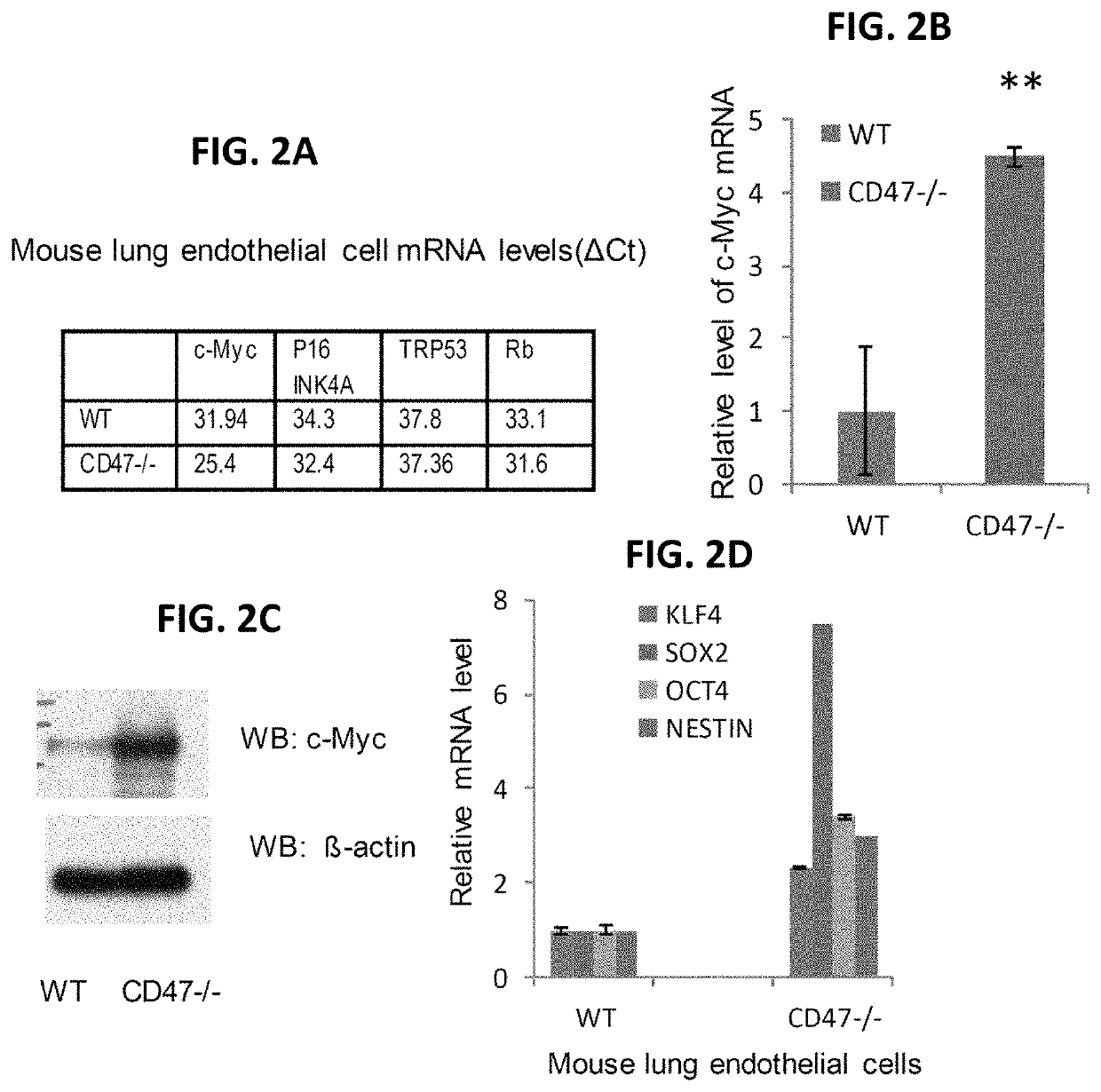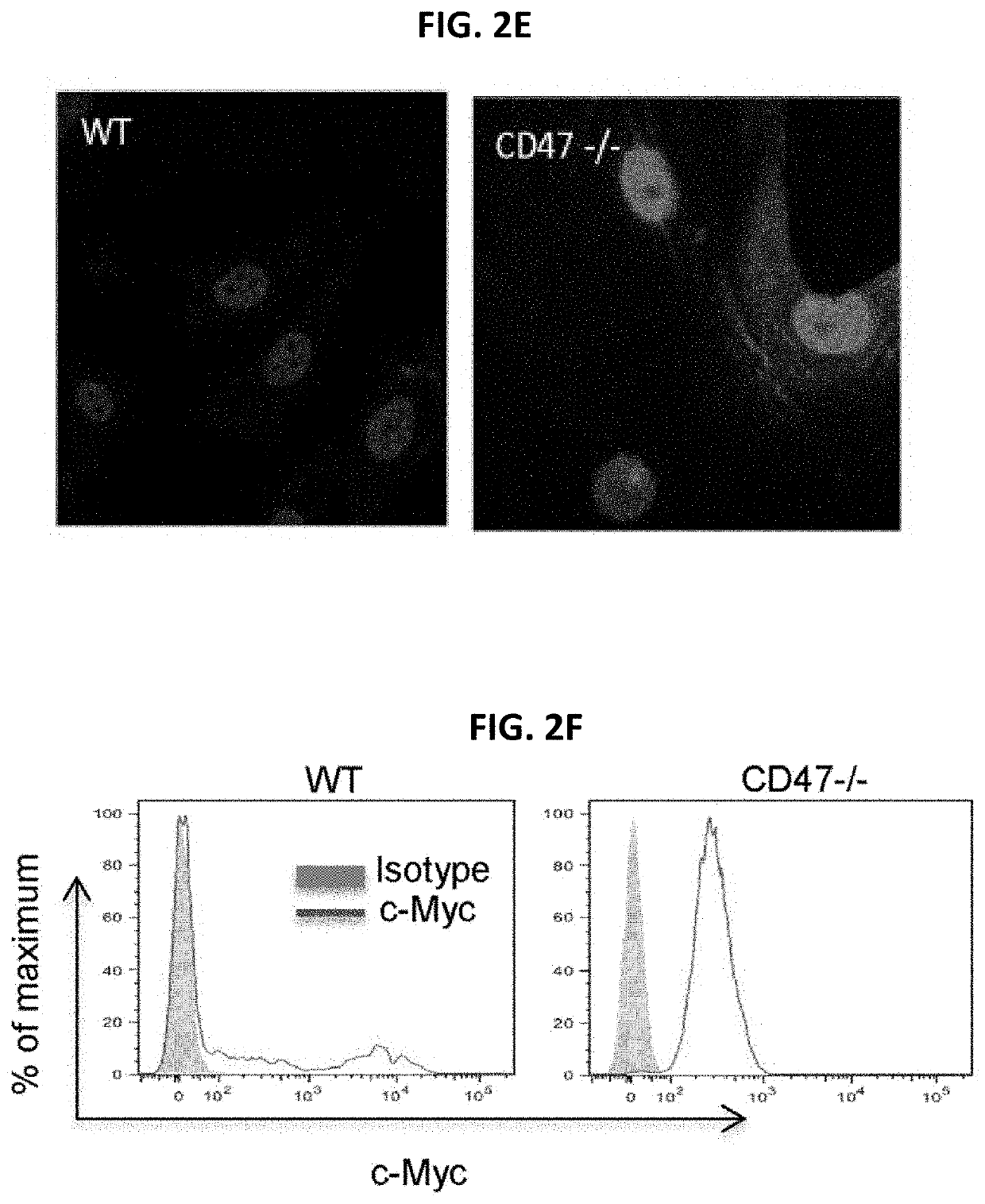Methods for generation of pluripotent and multipotent cells
a multi-potent cell and cell technology, applied in the field of methods for generating pluripotent cells, can solve the problems of insufficient pathway to account for the resistance to ionizing radiation caused, the inability to regulate mitochondrial function to account for the profound resistance to stress conferred, and the inability to survive in serum-free media, etc., to achieve the effect of increasing the expression of the transcription and cell proliferation factor c-myc, increasing the cellular lifespan and expansion, and increasing the transcription factor c-my
- Summary
- Abstract
- Description
- Claims
- Application Information
AI Technical Summary
Benefits of technology
Problems solved by technology
Method used
Image
Examples
example 1
bits Self-Renewal and Reprogramming by Regulating c-Myc and Other Stem Cell Transcription Factors
[0232]This example shows that primary cells obtained from CD47- or thrombospondin-1-null mice lack the rapid senescence in culture typically observed for wild type (WT) primary mouse cells, and that the resilience of these null cell primary cultures derives at least in part from enhanced self-renewal and an ability to undergo stem cell reprogramming.
INTRODUCTION
[0233]CD47 is a signaling receptor for the secreted matricellular protein thrombospondin-1 and the counter-receptor for signal-regulatory protein-α (SIRPα), which on phagocytic cells recognizes CD47 engagement as a marker of self (Matozaki et al., Trends Cell Biol 19, 72-80, 2009: Roberts et al., Matrix Biol., 31(3):162-169, 2012: Frazier et al., in Nature Signaling Gateway, doi:10.1038 / mp.a002870.01, 2010). Mice lacking CD47 or thrombospondin-1 are profoundly resistant to several types of tissue stress including ischemia, ischemi...
example 2
Neural Differentiation of CD47 Null Stem Cells Occurs without Malignant Transformation
[0334]CD47-null embryoid bodies were cultured in neural medium on gelatin coated dishes as described in Example 1 to induce neuroepithelial differentiation. The neuroepithelial morphology of the resulting cells showed that this germ layer arises efficiently from CD47-null EBs. WT cells were not capable of forming EBs or subsequent reprogramming. The neural differentiation of the cells was further demonstrated by the presence of neurites projecting from the monolayers (FIG. 15).
[0335]The neuroepithelial differentiated CD47-null cells were stained with markers to confirm their phenotypes and to determine whether malignant transformation had occurred. The continuously growing CD47-null cells expressed the proliferation marker CDK2 but lacked over-expression of the transformation marker Ras. This demonstrates that blocking CD47 permits self-renewal without causing malignant transformation of the cells....
example 3
47 Ligands to Induce Self-Renewal in Primary Human Endothelial Cells
[0336]This example describes use of CD47 binding peptides, CD47 antibodies (either anti-mouse or anti-human CD47), and CD47 antisense morpholino to induce stem cell properties and enable self-renewal. Also shown is activity to reprogram primary human endothelial cells.
[0337]Human umbilical vein endothelial cells (HUVEC), which express CD47, normally become senescent with repeated passage in tissue culture (FIG. 16A). However, treatment with the CD47-binding peptide 7N3 (10 μM) or with the function blocking anti-human CD47 antibody B6H12 (1 μg / ml) dramatically increased the sustained proliferation of these cells (FIGS. 16B and C). Similar results were obtained with primary WT murine lung endothelial cells (which express CD47), using peptide 7N3 or a function blocking anti-mouse CD47 antibody (clone 301) to treat primary mouse lung endothelial cells (FIG. 17). Similar responses were seen on the TSP1 null cells, but th...
PUM
| Property | Measurement | Unit |
|---|---|---|
| temperature | aaaaa | aaaaa |
| time | aaaaa | aaaaa |
| length | aaaaa | aaaaa |
Abstract
Description
Claims
Application Information
 Login to View More
Login to View More - R&D
- Intellectual Property
- Life Sciences
- Materials
- Tech Scout
- Unparalleled Data Quality
- Higher Quality Content
- 60% Fewer Hallucinations
Browse by: Latest US Patents, China's latest patents, Technical Efficacy Thesaurus, Application Domain, Technology Topic, Popular Technical Reports.
© 2025 PatSnap. All rights reserved.Legal|Privacy policy|Modern Slavery Act Transparency Statement|Sitemap|About US| Contact US: help@patsnap.com



